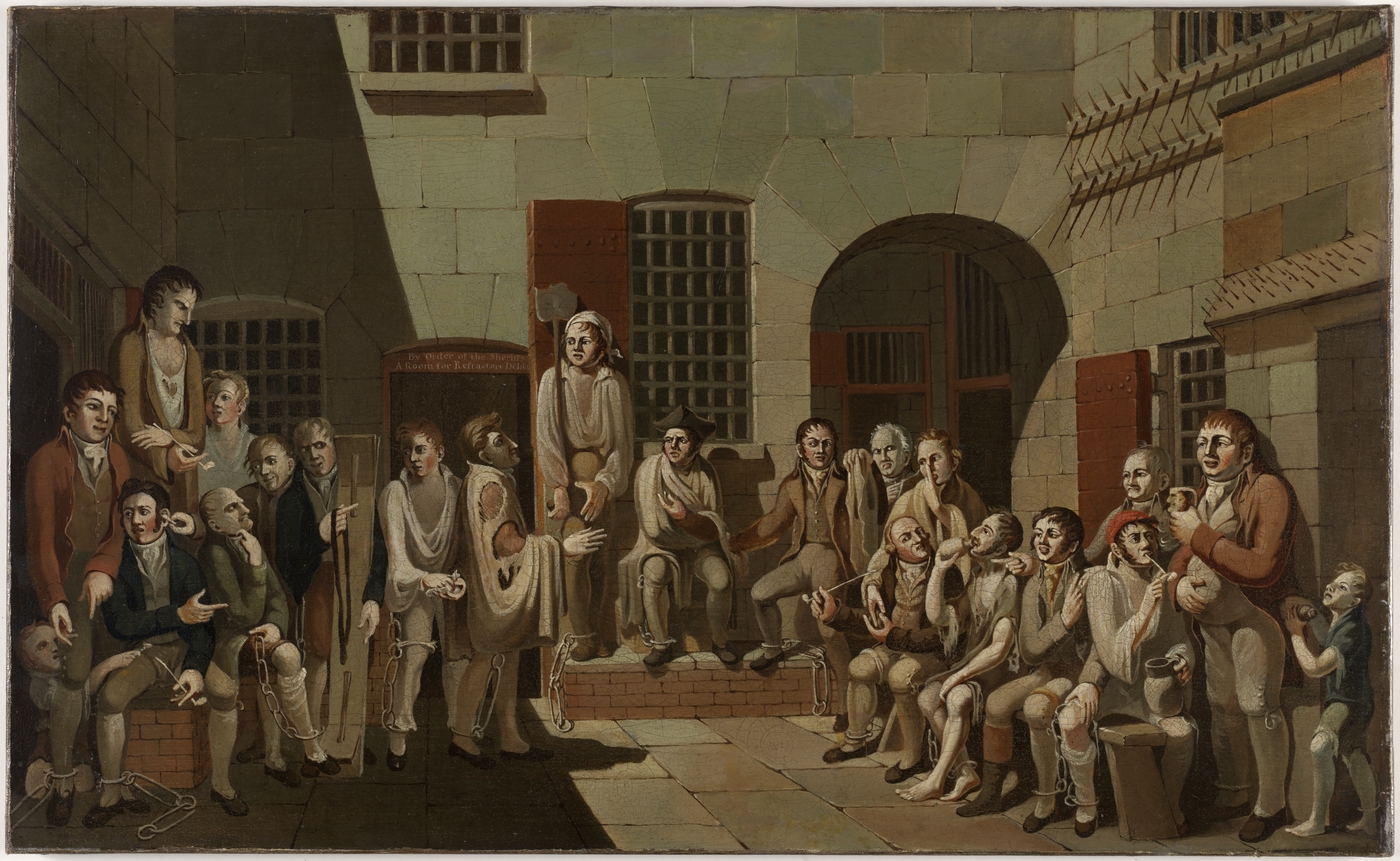
This paper analyses the notable degree to which early colonial Australian visual culture was dependent upon the skillset of convicted and transported forgers from Great Britain. As the eighteenth century progressed, forgery crimes were subject to increasingly harsh sentencing, including a gallows death and transportation. This severity reflected broader efforts to enshrine the sovereignty of money at a time when credit systems—exemplified by the widespread use of paper instruments—threatened the perceived intrinsic (or metallurgic) value of coins. Perhaps not surprisingly, given the shared technical skills in mimesis and reproduction, over half the artists who arrived in Australia on The First Fleet were convicted forgers.
Beginning with a case study of two scenes of Bristol’s Newgate Prison painted by the convicted forger cum Colonial Architect Francis Greenway, I examine the ways in which changes to sentencing for forgery crimes in eighteenth-century Britain delivered a range of artists and artisans—including Thomas Watling, Joseph Lycett, Charles Constantini, Richard Read Senior, Knud Bull, and Thomas Griffiths Wainewright—to the penal colonies in Australia.
Here, their convergence is suggestive for a reimagined history of Australian art since colonisation—a narrative that has pivoted ineluctably around the binaries of original and copy, centre and periphery.

Francis Howard Greenway, The Mock Trial (1812), oil on canvas.
***
Helen Hughes is a Lecturer in Art History, Theory and Curatorial Practice at Monash University in the Faculty of Art Design and Architecture. She co-founded and co-edits the Melbourne contemporary art journal Discipline, and is an editor of the peer-reviewed art history journal Electronic Melbourne Art Journal.
e